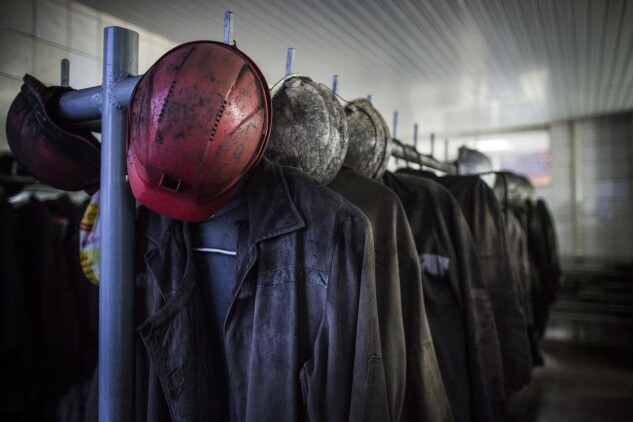Monday morning musings for workplace watchers
States Win Early on Captive Audience| Mine Safety Industry Gets Its Way
Chris Marr: Challengers to state laws restricting workplace “captive audience” meetings are 0-for-2 in litigation recently, but it’s still early in the game with appeals possible and three other cases awaiting federal district court rulings.
Business groups and conservative-leaning policy shops have filed at least five challenges against the laws in four states—California, Connecticut, Illinois, and Minnesota. They’re among the dozen states since 2022, most recently New Jersey, to ban employers from penalizing workers who skip mandatory meetings where management opines on politics, religion, or union membership.
Unions and other supporters say the laws prevent employers from using mandatory meetings to coerce workers against exercising their federal rights to labor organizing. Opponents say the laws violate employers’ First Amendment rights and are preempted by the National Labor Relations Act.
The outcome of these cases could determine state policymakers’ ability to bolster private-sector unionizing—an area traditionally governed by federal law. The National Labor Relations Board under the Biden administration found captive audience meetings violate workers’ labor rights.
Besides the free speech and labor law issues, some states wrote their laws to be enforced primarily by private individuals filing lawsuits, complicating the standing issue for challengers suing state officials to seek an injunction, said Jeffrey Schwab, senior counsel at the Liberty Justice Center who’s representing plaintiffs in two cases.
“You can imagine a lot of damage done to people’s constitutional rights if there’s no pre-enforcement actions” against state laws enforced only by private individuals’ litigation, he said.
The two court losses thus far came in California and Minnesota.
State officials from Minnesota won an appeal at the US Court of Appeals for the Eighth Circuit this month. A panel of judges found the challengers, including the Minnesota Chapter of Associated Builders and Contractors, failed to show the imminent enforcement threat needed to overcome the state officials’ sovereign immunity claims. The business groups asked the Eighth Circuit for a full court review Sept. 17.
In California, a federal district court dismissed the California Policy Center’s challenge, finding the plaintiff lacked standing as a political organization that the law exempts from limits on politically focused meetings.
The plaintiffs are preparing to appeal to the Ninth Circuit by an early-October deadline, said Schwab, who represents the California Policy Center.
That leaves three cases awaiting decisions, the oldest being the US Chamber of Commerce’s challenge in Connecticut, which kicked off the recent flurry of captive audience laws in 2022. The Chamber partially defeated the state defendants’ motion to dismiss in 2023, and the two sides now await a decision on dueling motions for summary judgment.
Another California case, brought by the California Chamber of Commerce and other business groups, awaits a district court decision on the challengers’ motion for preliminary injunction.
And in Illinois, a suit brought by the Illinois Policy Institute awaits a decision on competing motions for dismissal and for preliminary injunction.
Challengers to a pair of older captive audience laws had mixed results. They won a court order blocking Wisconsin’s law in 2010, but courts dismissed similar lawsuits against Oregon’s law twice, most recently in 2020.
Tre’Vaughn Howard: The US Mine Safety and Health Administration is following the lead of mining companies by repeatedly delaying enforcement of a regulation to protect miners, according to legal scholars and unions.
The agency is also poised to have a new leader in a long-time industry representative.
MSHA’s silica rule, which went into effect last year, requires mines to cut the amount of breathable silica that workers are exposed to in half. The agency earlier this year paused enforcement until a legal challenge against the rule is concluded, requested time extensions to settle the challenge, and rejected efforts by the mine union to join the case.
The decision by MSHA to block union intervention should’ve raised questions for the US Court of Appeals for the Eighth Circuit—where the challenges are taking place—to ask if the Trump administration plans to defend the rule, said Anne Lofaso, a labor law professor at the University of Cincinnati.
Lofaso said MSHA is putting the interests of the mining industry over the public.
“It is a natural tendency that administrations will tend to favor different sides; that is because they are inherently political,” said Lofaso. “Industry capture is a major problem in administrative law.”
A Department of Labor official declined to provide a reason for delaying settlement talks with industry and said the agency will continue to temporarily pause enforcement until litigation in the case is concluded.
MSHA, however, faces two major hurdles to a potential settlement: under the Administrative Procedure Act, any negotiated changes to the rule would need to undergo rulemaking again, and any weakening of protection in the rule would violate the Mine Act’s no less protection clause—subjecting it to a new legal challenge.
The Trump administration hasn’t taken a clear public position in the legal challenge. This comes as the full Senate is expected to weigh the nomination of Wayne Palmer to lead the agency as early as this week.
United Mine Workers of America says the DOL is allowing the mineral industry—which isn’t affected by the rule until 2027—to delay compliance.
“The Department of Labor and MSHA should be fighting to implement this rule immediately, not kicking enforcement down the road yet again,” said UMWA International President Cecil E. Roberts.
Palmer would return to MSHA after working as an executive at the Essential Minerals Association, a trade association for the industrial minerals industry. EMA supports the challenge to the silica rule.
Palmer didn’t respond to a request to comment.
To contact the reporters on this story:
To contact the editors responsible for this story:
Learn more about Bloomberg Law or Log In to keep reading:
Learn About Bloomberg Law
AI-powered legal analytics, workflow tools and premium legal & business news.
Already a subscriber?
Log in to keep reading or access research tools.


